Mushroom exhibition in Dobré

‘There are no toadstools!’ The despair of this exclamation, received by email as I set off for Krupárna, can only be fully understood by someone who has organized a mushroom exhibition.
Although it had rained in recent weeks, temperatures had more recently climbed into the 30s. That’s too warm for mushrooms. Still, we hoped to find something more than dry leaves and needles in the forest. The forest was kind to us! With the help of about 15 friends, we collected several baskets of mushrooms to fill the prepared tables. Each mushroom was carefully identified by the mycologists and other mushroom experts present and placed in the appropriate place. It was fascinating to observe the identification process and listen to the debates and discussions over individual characteristics.
The exhibition officially opened with a lecture from mycologist Václav Matějka. One of the interesting facts he shared was the discovery that the amount of poison in mushrooms considered poisonous (or even mushrooms considered edible by the general public) varies with the substrate on which the mushrooms grow. Thus, a mushroom from a limestone substrate will be much less poisonous than the same species of mushroom growing in acidic soil. This may account for the often mixed messages regarding the poison level of mushrooms. Similarly, for a not very good-looking but edible wood-destroying fungus – the yellow-orange Chicken-of-the-woods – the type of host wood makes a difference. It should definitely not be eaten from an Black Locust tree, but the young fruits of Chicken-of-the-woods found on the wood of fruit trees are very tasty.
We also learned how to safely tell Russula from other types of mushrooms and how to identify some of them by their gills (Green Brittlegill or Blackening Brittlegill). How to photograph a mushroom for identification was also valuable information for avid mushroom pickers. There was, of course, also the opportunity for expert identification of fruit bodies brought by the public.
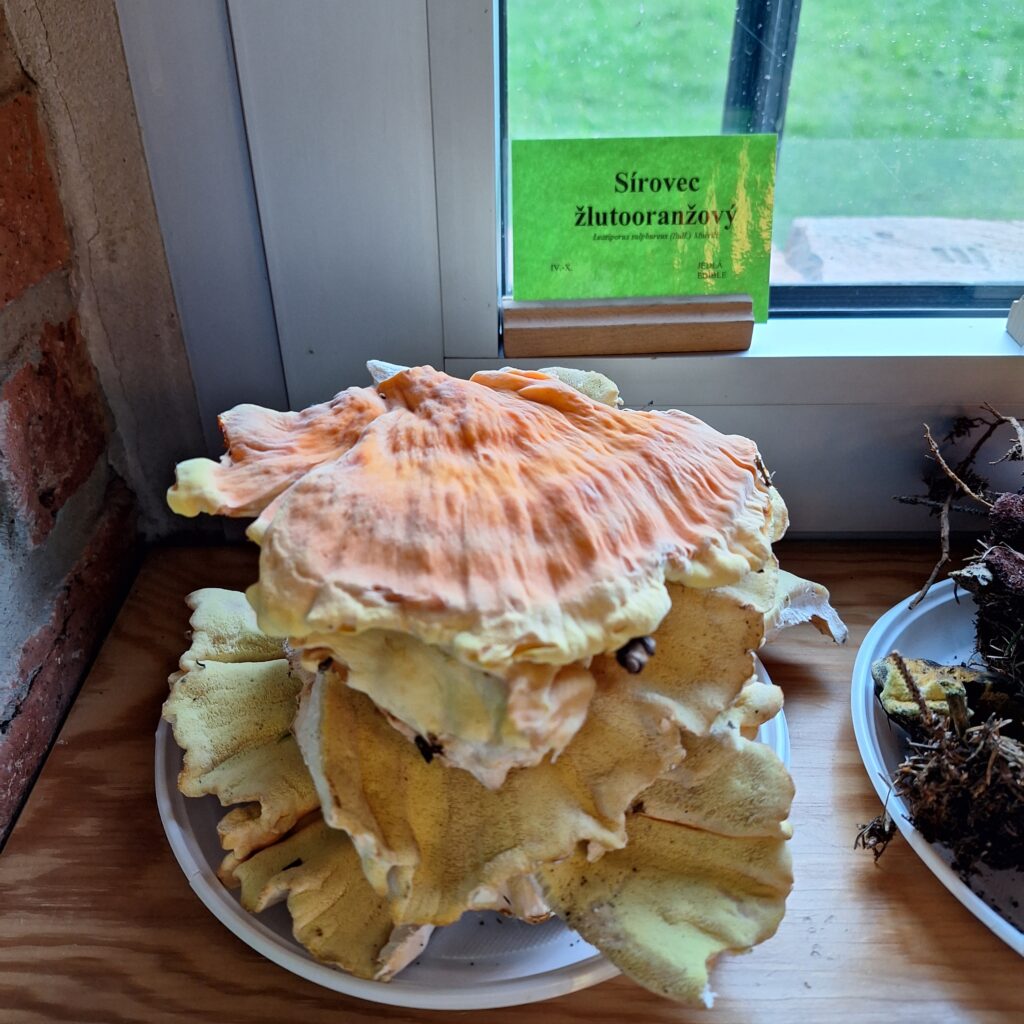
Traditionally, children of school and pre-school age from Dobré and the surrounding area visit the exhibition. This year, they learned from mycologist Vláďa Špatný how mushrooms and the forest work together, that the purpose of mushrooms is not only to feed animals or people but especially to participate in the decomposition of biological material in the forest. A lot of emphasis was placed on how important it is to always make sure that they or their parents know the mushroom they are picking and know that it is safe to eat.

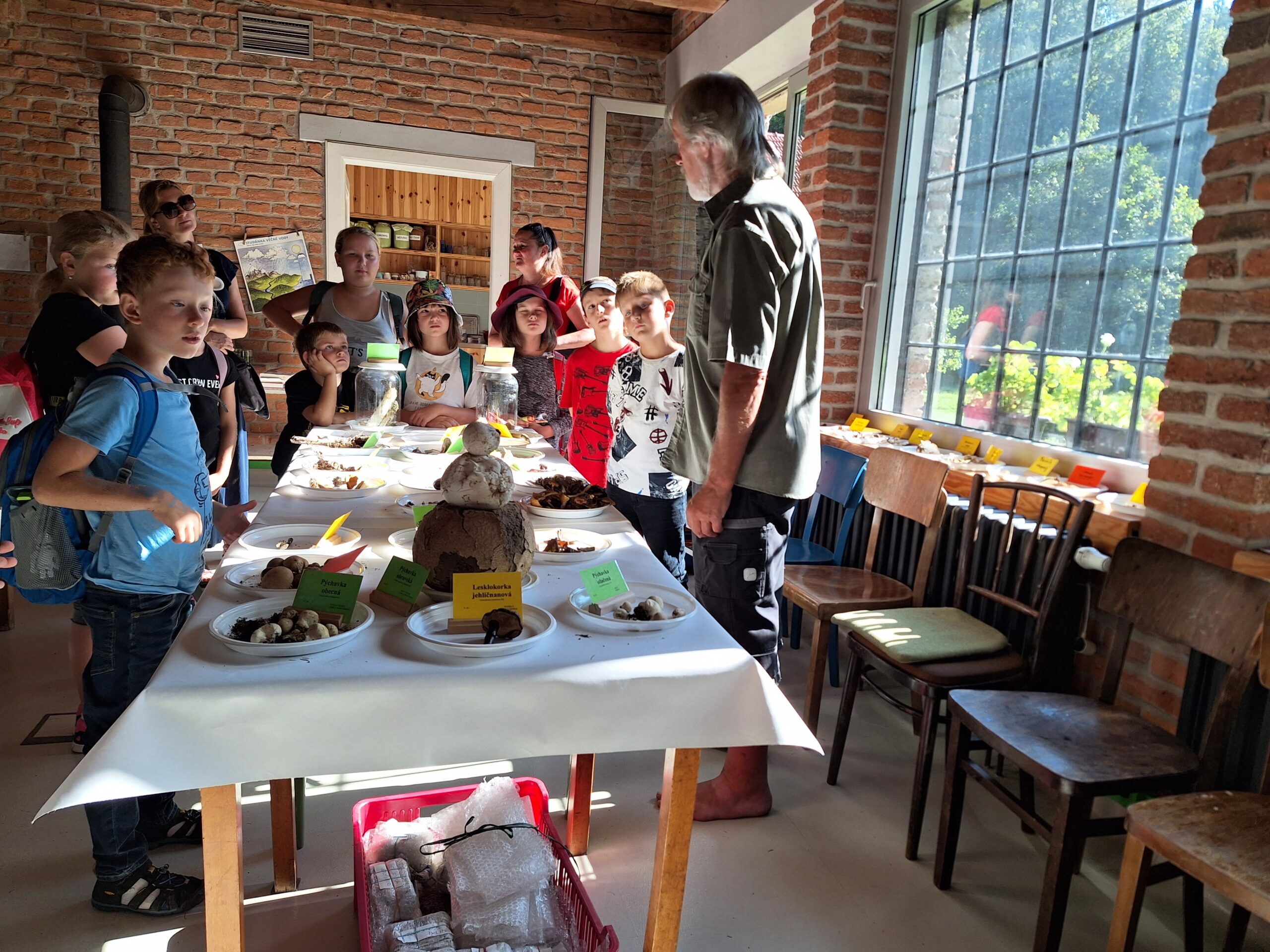
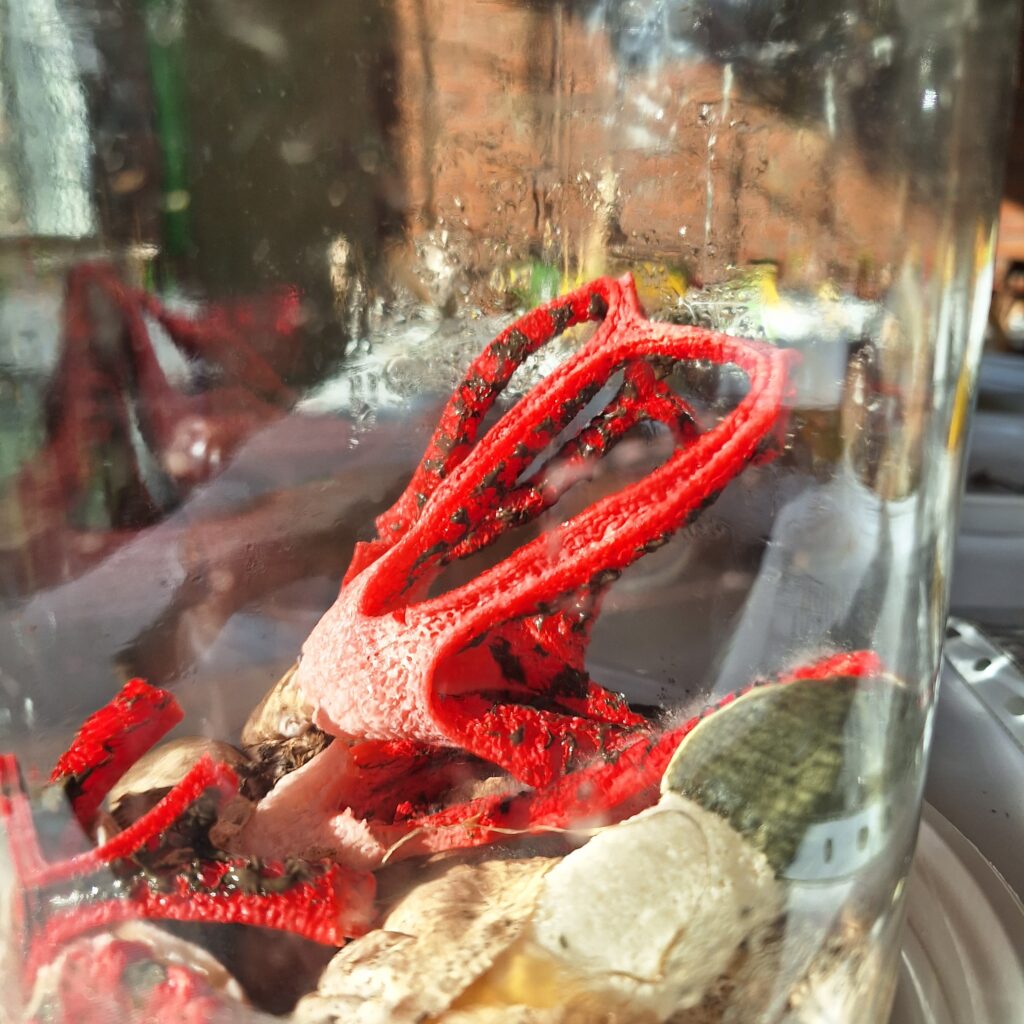
One of the biggest draws for the children was the two sealed jars – one with a Common Stinkhorn and the other with a ‘flowering’ Octopus Stinkhorn (Devil’s Fingers). The more adventurous sniffed both mushrooms and were quite surprised to learn that the Common Stinkhorn was actually edible! True, only when young, when the fruiting body is still closed and looks like an egg, but even then, few would think of eating this unpleasant smelling mushroom.
The older school children did well with 10 tricky questions presented to them. The younger children went with Filip to the picture forest to play a game of deciding which mushrooms to take home to eat and which to leave in the forest. It was a pity that mushrooms such as the Saffron Milk Cap and the Golden Chanterelle were often left in the forest…but definitely better than bringing home a Death Cap! Fortunately, no one made such a mistake.
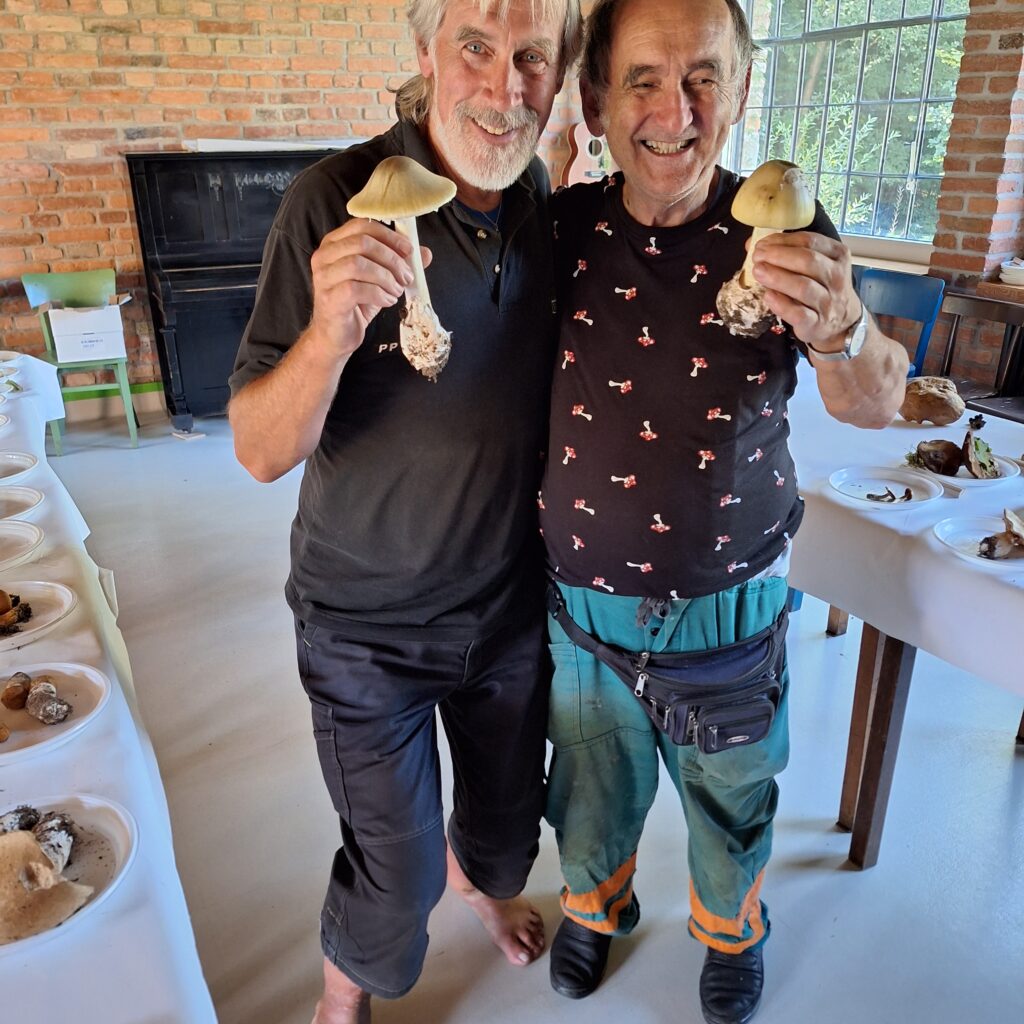
The excitement from so many interesting and beautiful mushrooms evident in the children’s faces could only be compared to the excitement of the adults on finding two exquisite Death Caps and the rare missing Fly Agaric.
The mornings and evenings consisted of mushroom forays in nearby forests to renew the exhibits. Collecting mushrooms for the mycological exhibition is a joy, because you collect much more than the average mushroom picker. You don’t care if the mushroom is edible or inedible, or even poisonous. During the show, our collection grew from 150 species to a total of 186, including several rather rare species: Octopus Stinkhorn, Golden-gilled Bolete, Blushing Dapperling and the increasingly rare Cauliflower Coral.
I left the exhibition filled with energy and new information, as always when I have the opportunity to be at Krupárna, as well as strengthened in my faith. Despite the initial fears and drought (whether in nature or spiritual), it turned out that all it takes is a little patience and trust in God’s favour and we are often surprised at the level of blessing we receive from Him.
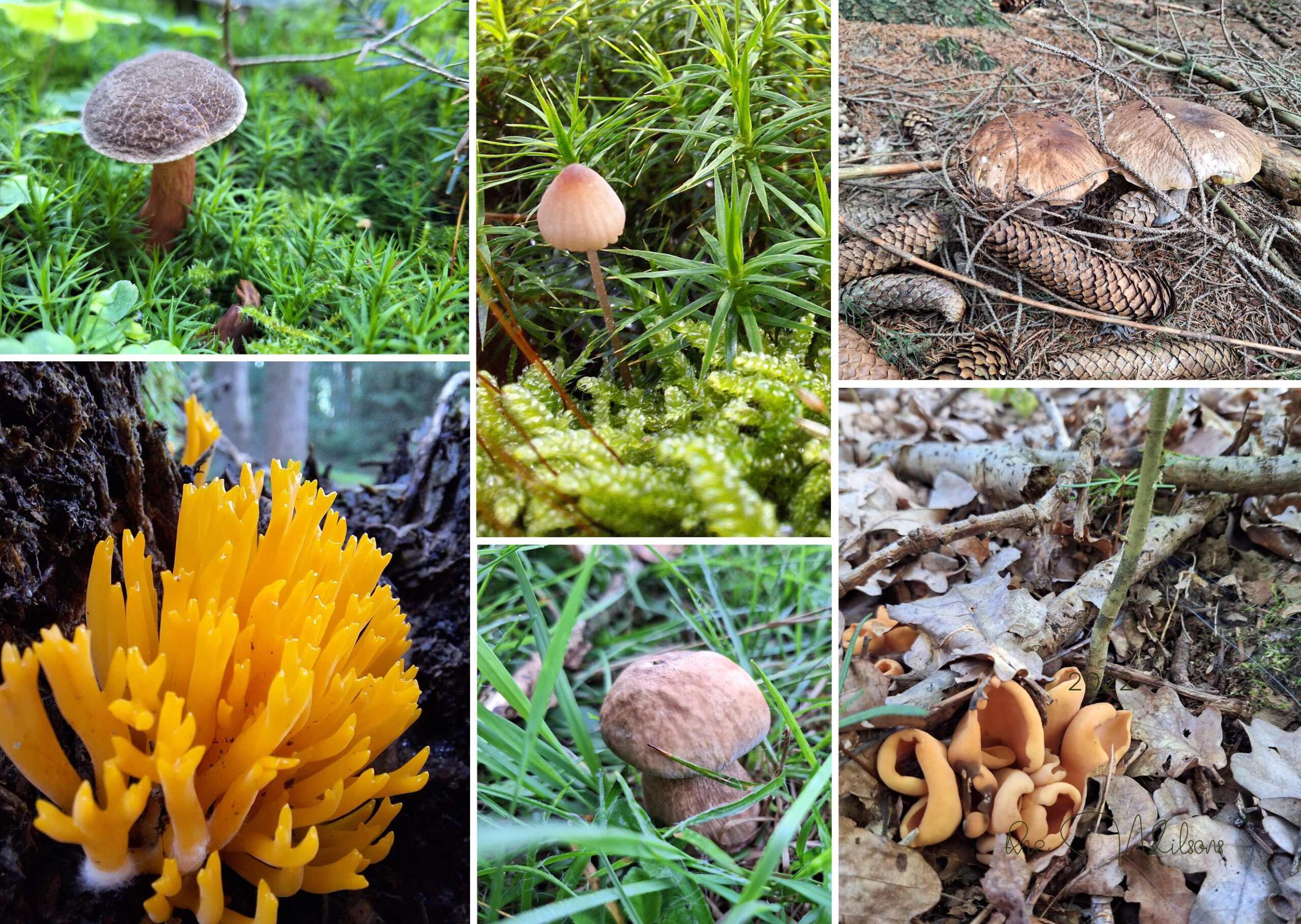
Protecting threatened birds
In East and South Bohemia A Rocha Czech is studying, monitoring and working to protect three species which have seriously declined in recent years:
The Common Kingfisher Alcedo atthis – Pavel Světlík, director of A Rocha Czech, has been ringing Kingfishers for nearly 40 years and has noticed a marked decline in their numbers. In autumn 2002 A Rocha Czech ran a monitoring programme, with volunteers, which recorded severe flood damage to many formerly suitable nest banks and reduced numbers of birds. A Rocha Czech is now experimenting with artificial nest sites.
The White-throated Dipper Cinclus cinclus – Dippers in the Czech Republic have also been adversely affected by floods and acidic pollution of the rivers. Young people in A Rocha Czech’s nature clubs are monitoring local populations and making artificial nestboxes.
The Little Owl Athene noctua – A Rocha Czech is also monitoring Little Owls and providing nestboxes.

Protecting threatened habitats
Orlické Záhoří (Eagle Mountains) is a 904 hectare marshland and grassland site in Eastern Bohemia. The area holds important populations of Corncrake Crex crex and Red-backed Shrike Lanius collurio, both of which are priority species under the EU Birds Directive. Past damage from a drainage scheme and future pressures from overgrazing and tourism threaten the area. A Rocha Czech is working in partnership with the Czech Ornithological Society to carry out long-term monitoring of the birds, and working to ensure that restoration measures produce the desired effects.